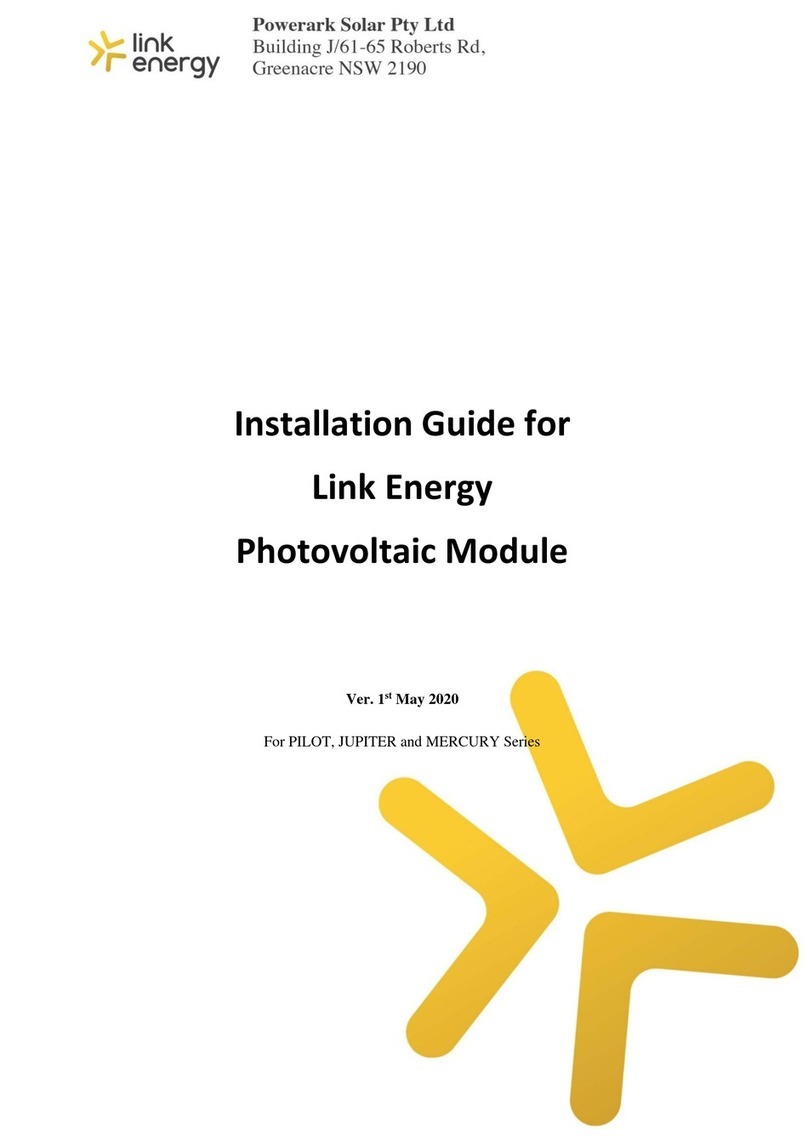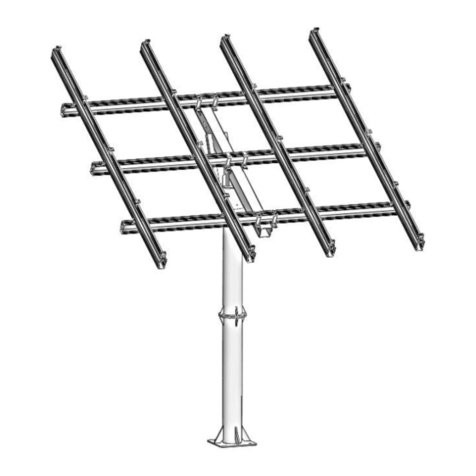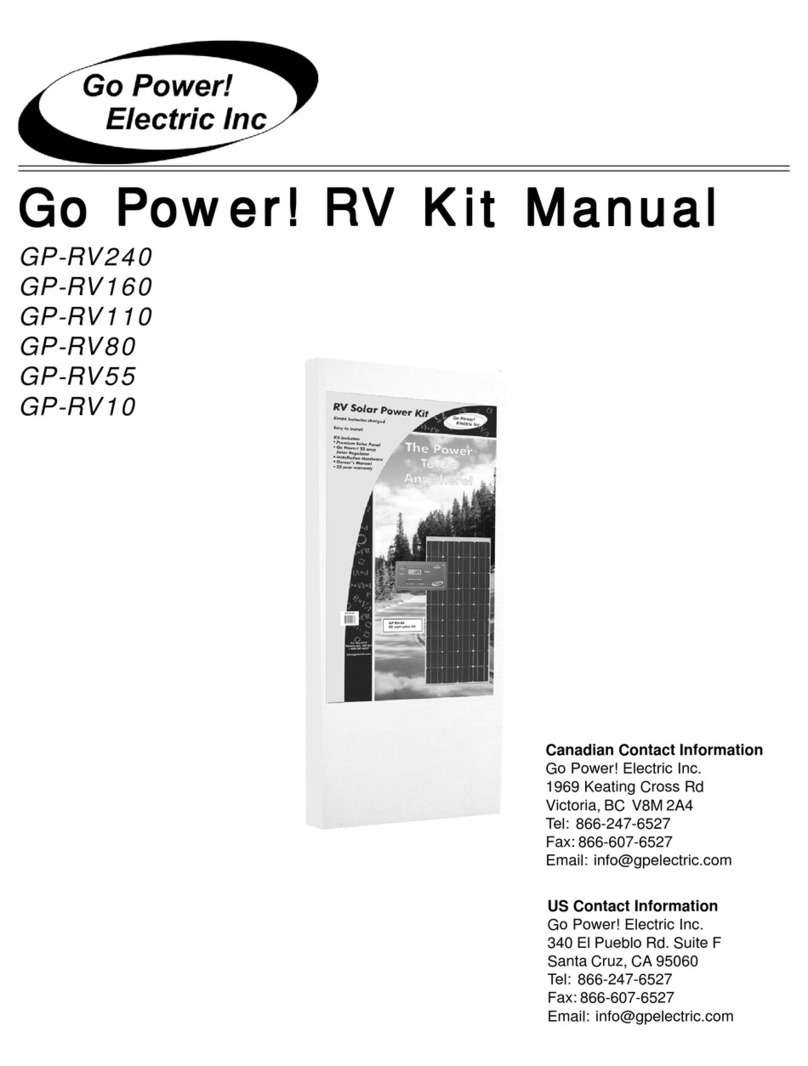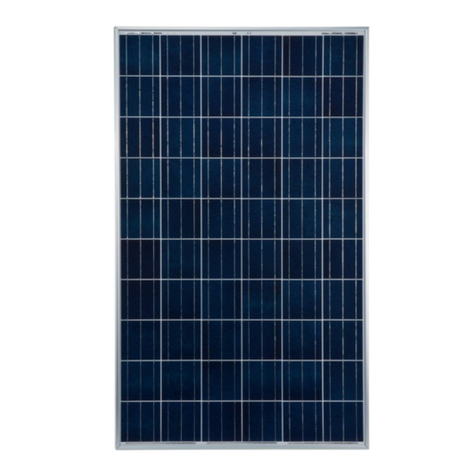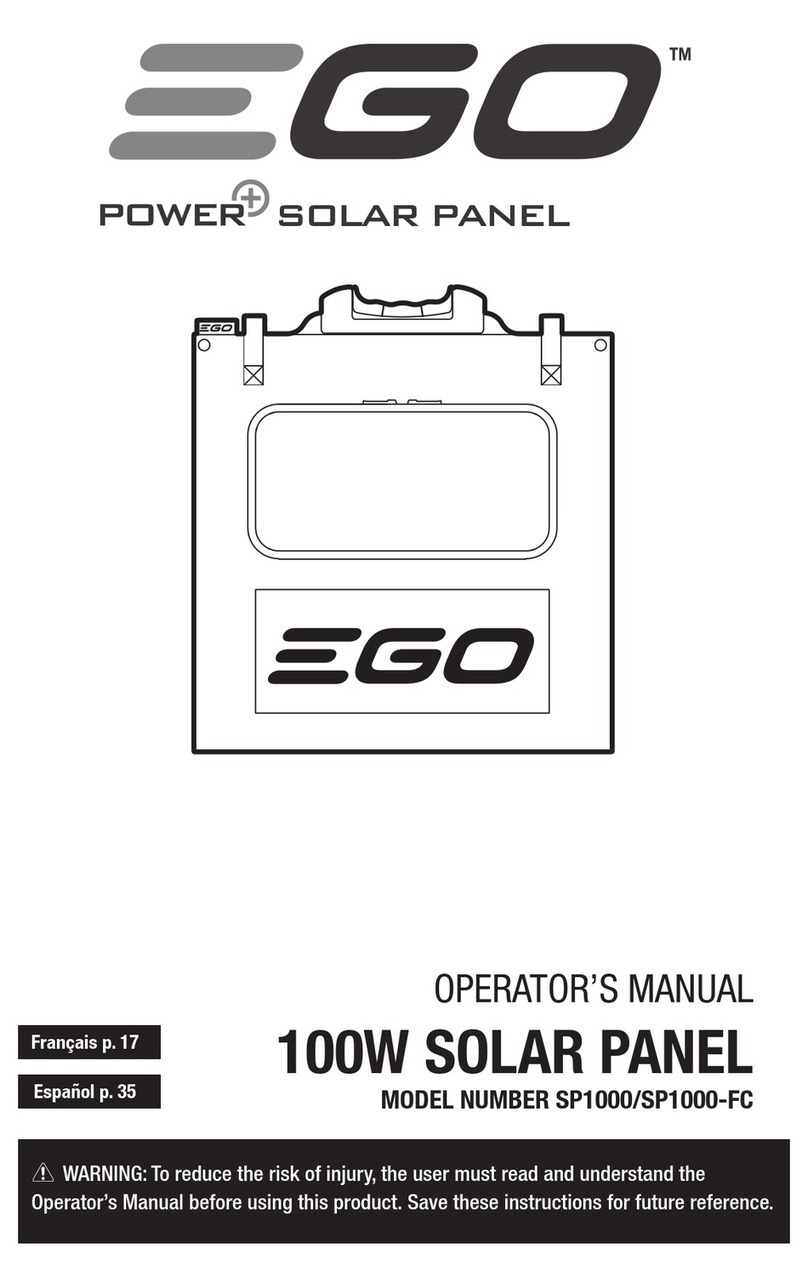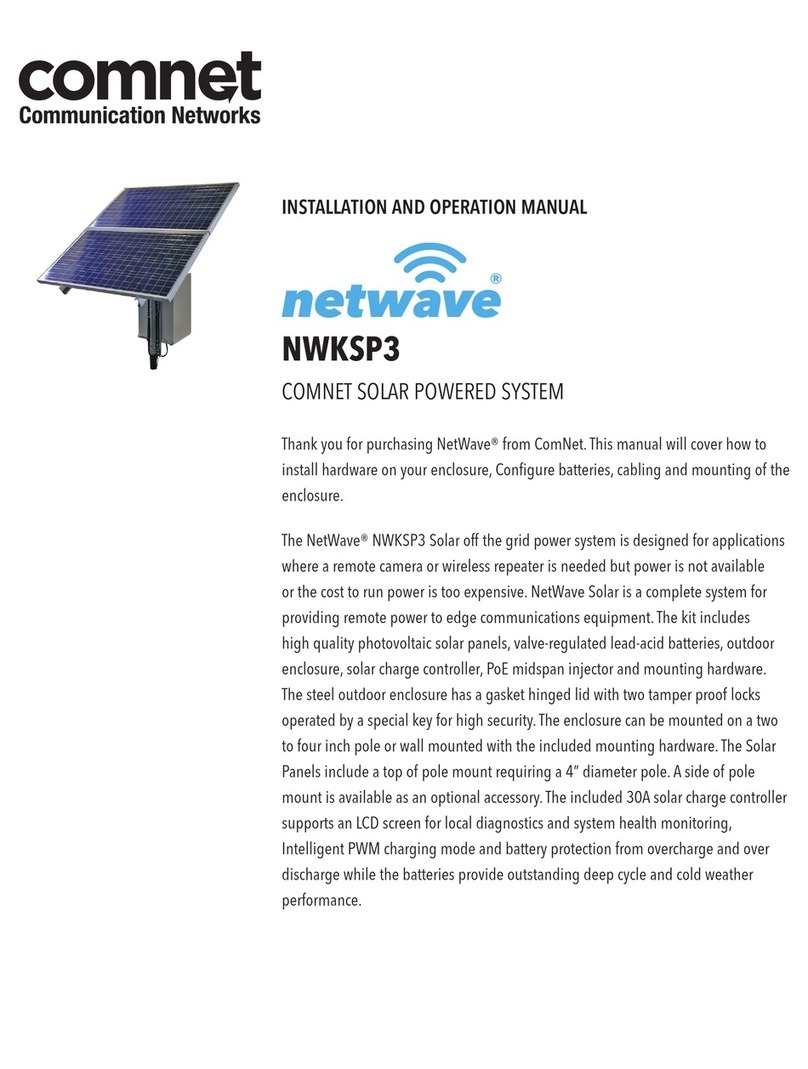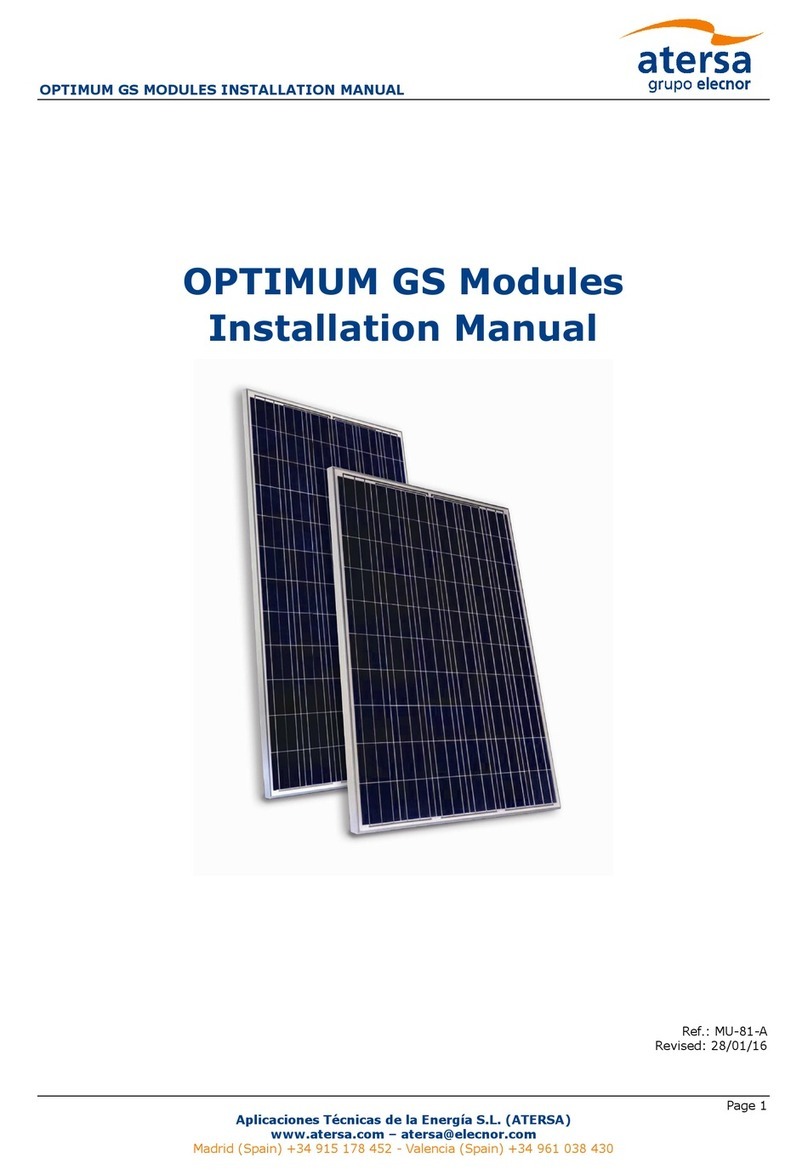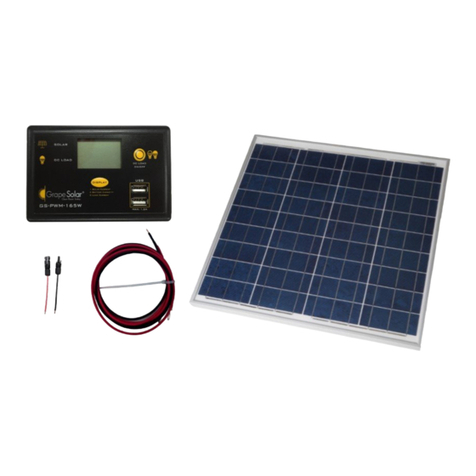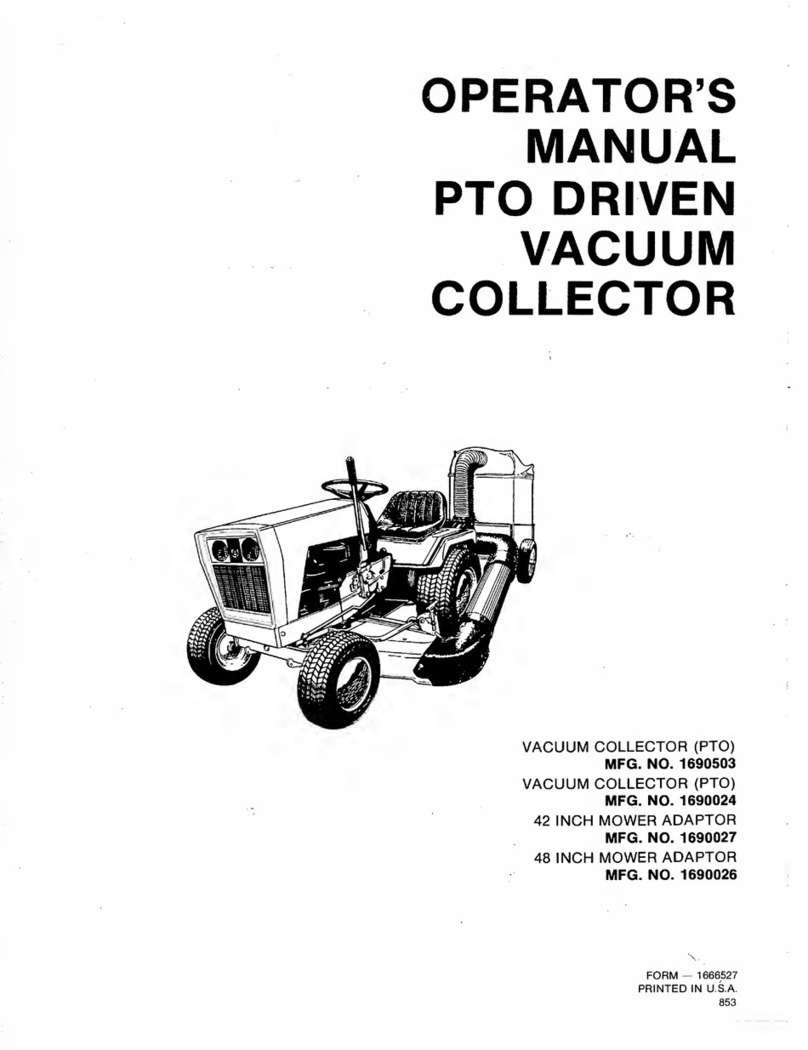SOLE S150 User manual

GB
SOLAR COLLECTORS
INSTALLATION MANUAL
MODELS: S150 – S200 – S230 – S260

Page 2of 24

Page 3of 24
INDEX
PAGE
1. Presentation ……………………………………………………………………..
4
2. Parts Included ……………………………………………………………………
4
2.1. Solar Collectors …………………………………………………………….
4
2.2. Support Frame …………………………………………………………….
6
2.3. Connectors ………………………………………………………………….
7
3. Placement of the Collectors …………………………………………………….
8
4. Bank of Collectors ……………………………………………………………….
9
5. Flat Roof Installation …………………………………………………………….
13
5.1. Installation of longitudinal profiles D3 and Z angle E1/E2 ……………...
13
5.2 Installation of vertical legs A3 and the long cross pieces X1/1/X2 ………………………
14
5.3. Installation of vertical legs A3 and the longitudinal profiles D3 …………..
15
5.4. Placement of Solar Collectors …………………………………………….
16
6. Tile roof installation ………………………………………………………………
17
7. Connections and Hydraulic Circuit …………………………………………….
17
8. Lightning Protection....................……………………………………………….
20
9. Permissible wind and snow load ………………………………………………. 20
20
10. Care and Maintenance Program ................................................................. 21
21

Page 4of 24
1. Presentation
The present document demonstrates detailed installation instructions for the solar
collectors using the support frames and accessories included in the supply.
Before proceeding with the installation of the collectors, read these instructions and
make sure you have understood. If you have questions about the materials or on the
assembly process described in this document, contact your supplier via telephone,
fax or e-mail. Improper installation of the collectors may cause an unsatisfactory
operation of the solar system, compromising its durability and even be dangerous for
the people or the goods.
The instructions of this document do not exempt in any way the compliance with
existing regulations and provisions of technical and administrative application at the
place where the facility is located.
The installation of solar collectors without following the instructions in this document
and / or regulations will invalidate the warranty of the product.
The installer will check before starting the installation that he has all the necessary
parts and all the security measures have been taken in order to carry out the
installation safely. The installer must use protective gloves to avoid any risk of burns
or cuts during handling of collectors or its support frame.
2. Parts Included
The supply consists of:
One or more solar collectors
One or more support frames
Two or more fitting and connection (except for a single collector)
2.1. Solar Collectors
The solar collectors are supplied individually packaged in carton boxes. The collector
model is indicated on the outside of each box. Depending on the number of units
ordered, collectors can be supplied palletised in groups of up to 10 units. Collectors
should always be during transport and storage placed with the glass facing on top,
otherwise there is danger of water entering in the collectors from the ventilation holes
at the back of the collector.
The main technical characteristics of the collectors are indicated below (figure no. 1)
TYPE
WEIGHT
DIMENSIONS (mm)
A
B
C
D
E
F
S150
27,30kg
960
1540
1010
895
1458
1815
S200
32,00kg
960
1960
1010
895
1878
2183
S230
38,80kg
1165
1960
1215
895
1878
2280
S260
44,00kg
1238
2135
1308
895
2055
2468

Page 5of 24
Absorber
Copper tubes and aluminium fins with selective coating.
Pressure test
15 bar
Pressure max.
10 bar
Isolation
Side: 20 mm glass wool
back: 40 mm rock wool
Casing
Aluminium profile Free of bolts and rivets.
Sea Water resistant.
Glass
Tempered low iron prismatic glass 3.2 mm.
Sealing
Structural Glazing Silicon Sealant
Connector
Compression union 18x18
Flow recommended
40 litres/h/m²
Content of liquid
S150 = 0,85ltr; S200 = 0,95 ltr; S230 = 1,20ltr; S260 =
1,30ltr
Figure 1. Characteristics of solar collector
The manufacturing of the solar collector follow strict quality criteria and is certified by
ISO 9001:2008.

Page 6of 24
2.2. Support Frame
There are two sets of support frames for a single collector (EST1) or for two
collectors (EST2).
Depending on the bank of solar collectors chosen, the appropriate number of support
frames will be provided for one or two collectors. Table 1 shows the sets of support
frames necessary for different banks of solar collectors.
Nº of collectors in bank
1
2
3
4
5
6
EST1
1
-
1
-
1
-
EST2
-
1
1
2
2
3
Connectors
-
2
4
6
8
10
Table 1. The support frames and the connections provided depend on the number of
collectors per bank
The support frames sets are composed of elements that are shown in Figures 3 and 4.
Figure 3. Support frame components EST1 for a single solar collector

Page 7of 24
Figure 4. Support frame components EST2 for two solar collectors
The support frames allow the installation of the solar collectors with different
inclinations (45, 40, 35 or 30 degrees) using the same profiles and accessories, by
choosing properly the fixing holes.
2.3. Connectors
The connectors supplied are conical-type compression unions with metal ring and
allow the connection of two or more solar collectors in a bank, joining the top and
bottom of the collectors.
This way, the collectors are hydraulically connected between them in parallel.
The number of connections provided is determined by the number of collectors in the
bank, according to Table 1 above.
Figure5. Connections

Page 8of 24
3. Placement of the Collectors
The choice of location, inclination and orientation of the solar collectors has to be
determined at the design stage of the installation. The installation of the solar
collectors in the building should be carried out respecting the instructions of the
person in charge of the project, who should have taken into consideration the effect
of the orientation, inclination and possible shadows in the calculation of benefits of
the solar system.
Particular attention should be paid to the minimum distance maintained between two
rows of solar collectors or between an obstacle in front of a group of solar collectors
and them. During the calculation of this distance one should take into consideration
the latitude of the place, the inclination of the terrain and the period of use of the
facility. Failure to have a more detailed specification by the designer of the facility,
the distance should not be less than that shown in Figure 6.
At the time of its installation, the solar collectors should be stored in a compound
covered and kept in their original packaging. During the assembly phase, avoid
keeping the solar collectors outdoors with the cover glass facing down on wet
surfaces, in order to prevent entry of humidity or water in the rear of the collector.
Figure 6. Distance needed in order to avoid shadows on collectors.
Once at work, in the event that the installer observes the existence of elements that
can cause shadows on the solar collectors and have not be taken into account in the
design of the system, as protection walls in terraces, fireplaces, outdoor air
conditioning units or other elements, should inform the designer of the project or the
owner of the property in order to revise or amend the calculations made for the
location of the collectors, if necessary.
The system of fixing the support frame of the solar collectors to the building also
must be determined in the design phase of the installation, for example by
conducting benches built on a flat roof. In this case, the thickness and size of the
bench should be sufficient to ensure stability of the whole in case of strong gusts of
wind. In any case, the solution adopted should ensure the solidity and stability of the
setting without compromising the watertight integrity of the deck. To facilitate the
design of the fixing system, figures 7 to 13 show the distances between the support
frames of the solar collectors.

Page 9of 24
4. Banks of Collectors
The solar collectors can be connected with each other to form banks of up to 6 units
in parallel, connecting the top and bottom of the collectors through the fittings
included in the set.
The dimensions of pipe connections for collector arrays up to 20m² is 22mm.
It is recommended that the connections between the different banks of collectors are
also conducted in parallel. However, the connection of up to two banks of solar
collectors in series is allowed.
In the following figures from 6 to 13 shows the dimensions of the solar collectors
from 1 to 6 units and for different angles of inclination. Additionally, there should be
sufficient space around the banks of collectors to perform with comfort the hydraulic
connections.
Figure 7. A Single Collector
TYPE
A
B
S150
960mm
890
S200
960mm
890
S230
1165mm
890
S260
1238mm
890

Page 10 of 24
Figure 8. Bank of Two Solar Collectors
TYPE
A
B
C
D
S150
1980mm
890mm
555mm
960mm
S200
1980mm
890mm
555mm
960mm
S230
2390mm
1435mm
477,5mm
1165mm
S260
2536mm
1435mm
550,5mm
1238mm
Figure 9. Bank of Three Solar Collectors
TYPE
A
B
C
D
E
F
S150
3000mm
890mm
555mm
960mm
640mm
890mm
S200
3000mm
890mm
555mm
960mm
640mm
890mm
S230
3615mm
1435mm
477,5mm
1165mm
675mm
890mm
S260
3834mm
1435mm
550,5mm
1238mm
784,5mm
890mm

Page 11 of 24
.
.Figure 10. Bank of Four Solar Collectors
TYPE
A
B
C
D
E
S150
4020mm
890mm
555mm
960mm
1150mm
S200
5020mm
890mm
555mm
960mm
1150mm
S230
4840mm
1435mm
477,5mm
1165mm
1015mm
S260
5132mm
1435mm
550,5mm
1238mm
1161mm
Figue 11. Bank of Five Solar Collectors
TYPE
A
B
C
D
E
F
S150
5040mm
890mm
555mm
960mm
640mm
890mm
S200
5040mm
890mm
555mm
960mm
640mm
890mm

Page 12 of 24
Figure 13. Dimensions of the banks of collectors depending on the inclination.(The
above dimensions apply to all sizes of collectors)
.Figure 12. Bank of Six Solar Collectors
TYPE
A
B
C
D
E
S150
6060mm
890mm
955 mm
960mm
1150mm

Page 13 of 24
5. Flat Roof Installation
Next it will be described the procedure for installing a bank of two solar collectors on
a flat roof. The formation of more banks of collectors is done simply by adding the
support frames EST1 or EST2 when necessary.
5.1. Installation of the longitudinal profiles D3 and the Z angles E1/E2
Place the two longitudinal profiles D3 on the floor, at the indicated distance, so that
both profiles U remain outward-oriented. Place the two Z angles E1 or E2 over, in the
correct position (Figure 14a, 14b & 14c) .
Screw the lower Z angle E1 or E2 to the two longitudinal profiles D3 with two sunk
head bolts M8x20 with their nuts and washers and tighten.
Screw the higher Z angle E1 or E2 to the two longitudinal profiles D3 with two sunk
head bolts M8x20 with their nuts and washers, without tighten it yet in order to
facilitate the subsequent placement of the collectors.

Page 14 of 24
5.2. Installation of the vertical legs A3 and the Long cross pieces X1/X2
Place the two long crosspieces X1or X2 forming an X, with the convex part of the
profiles and link them into contact with each other through a bolt M10x20 with nut
and washer, without tighten it yet.
Place the two vertical legs A3 parallel on the floor, so that both U profiles are
oriented towards the interior. Screw the long crosspieces X1 orX2 as the cross-
legged to the vertical legs A3 using four bolts M10x16 with its nuts. Tighten the four
bolts at the ends and the bolt of the central X (Figure 15a and 15b).

Page 15 of 24
5.3. Installation of the vertical legs A3 and the longitudinal profiles D3
Lift the legs A3 coupled with the X formed with the long crosspieces X1 or X2 until
you place them vertically.
Lift the rear part of the longitudinal profiles D3 coupled with the cross profiles E1 or
E2 and join to the vertical legs A3, using two holes depending on the inclination that
should be given to the collectors (Fig. 16b). Tighten with two bolts M10X16 with its
nuts.
Join the short crosspieces X3 to the longitudinal profiles D3 (at its inner surface) and
to the rear legs A3 (at its outer face), use the holes depending on the inclination that
wants to be given to the collectors (Fig. 16b). Both profiles should be horizontal.
Screw with the two bolts M10x16 in each profile, with its respective nuts.
Join the structure to the bench, using the raw plugs and anchored bolts supplied or
with the fixing parts suitable to the characteristics of the support frame. In any case,
the choice of the solution adopted should avoid compromising the watertight integrity
of the roof. (Fig. 16a).
Figure 16b
X3
X3
Figure16a
AAa

Page 16 of 24
5.4. Placement of Solar Collectors
Place one of the solar collectors in the support frame, place it first on the lower
profile cross-E1 or E2 and then on the higher profile cross- E1 or E2. Adjust the
position of the solar collector in the structure, so that matches the holes in the
structure of the holes in the rear part of the collector (Figure 17).
Remove the protection caps
of the collector lateral’
connections and introduce
the two compression union
connectors (see fig. 5).
Remove the protection caps
of the connections of the
lateral of the second
collector and place it on the
structure, on the cross
profiles E1 or E2 lower and
upper.
Slide the second collector so
that the end is introduced into the connector. Verify that the connection has been
done correctly and that the holes in the structure match those holes back of the
collectors. Adjust the position of the collectors if necessary.
Adjust the higher cross- E1 or E2 profile to the collectors and tighten the bolts that
bind to the longitudinal profiles D3.
Screw the solar collectors to the structure, with the bolts M6x20 (four per collector)
with their washers.
Make sure all bolts and the different elements of the structure are properly tightened
and check the solidity of the whole and its correct fixing to the bench. The collectors
and the support system can withstand wind velocity up to 120km/h and weight of
snow up to 80cmheight at 45 degrees.
The bank of two solar collectors is ready to start the hydraulic connections.
Figure 17.
Figure 18.

Page 17 of 24
6. Tile roof installation
The assembly of solar collectors on a tile roof is done in a manner similar to that
described above, with a different position of the vertical legs A3 that have to be
placed horizontally underneath the E1/E2 in a parallel manner. The crosspieces X1
or X2 and X3 shorts are not needed for tile roof installation.
The profiles D3 longitudinal and transverse E1 or E2 have to be fixed to the roof with
strength and without compromising its tightness. The fixing procedure will depend on
the characteristics of the roof. With the installation fittings are supplied some
perforated flexible metal strips to facilitate this fixation on certain roof configurations.
(See fig. 19) The collectors and the support system can withstand wind velocity up to
120km/h and weight of snow up to 80cmheight at 45 degrees.
Figure 19.
7. Connections and Hydraulic Circuit
The collectors or different groups of solar collectors must be connected hydraulically
to form a closed primary solar collection circuit. The use of copper pipes is
recommended, with a wall minimum thickness of 1 mm and an adequate diameter for
the circulation flow of each part.
The entry of liquid to the group of solar collectors will be from the end at the bottom
of the collector. On the top end connection a plug must be installed. The output of
liquid will be done by the top of collector's opposite end of each bank. On the top
connection an end cap must be installed.
The route of the pipeline will be conducted so as to minimize the parts where the flow
of the hot fluid runs (of the collectors towards the tank or to the interchange at the
plant room).

Page 18 of 24
In each group of solar collectors two stop valves should be installed at the entrance
and exit to allow the hydraulic isolation of the rest of the circuit and a safety valve
(figure 20).
The solar collectors reach high temperatures, especially in periods of great sunshine
and low energy consumption, which can cause significant expansion of the materials.
The connection of various groups of solar collectors with each other and / or pipes of
hydraulic circuit must be made so as to ensure that expansion does not cause
excessive pressure (tensions) on the connections or on the collectors, for example
by the use of flexible unions.
In all the high points of the primary circuit of the solar collectors, and particularly the
output of each group of collectors, an air vent must be installed, automatic or
manual. In any case, the air vent must be capable of withstanding temperatures of
up to 150 º C without deterioration. Once the air is drawn out from the circuit, the
vents will remain closed.
A smooth distribution of flow between different groups of solar collectors must be
ensured so that each group has a flow rate close to 100 litres / h for each collector
that is part of this group (i.e. 400 litres / h for every group of 4 solar collectors). This
can be achieved with appropriate design of the route of the pipeline or by installing a
balancing valve in each group, properly adjusted. We recommend the second
system.
The pressure drop within each collector should be taken into account when selecting
the appropriate pump. (figure 21 indicates the pressure drop)

Page 19 of 24
Figure 21.
The pipes must be insulated according to existing regulations. The thickness of the
insulation material must be at least 30 mm for a material with conductivity equal to
0.040 W/mºK. The insulation material must be capable of withstanding pipe surface
temperatures higher than 120 ° C without deterioration.
The circulating fluid must contain a sufficient amount of antifreeze liquid to avoid any
risk of freezing. The freezing temperature of the fluid circuit of the solar collector
should be less than the minimum temperature recorded at the site of the facility.
Propylene glycol makes an excellent choice for use as a heat transfer fluid in
applications where contact with potable water, food or beverages might occur. Its low
toxicity, low freezing point, corrosion-inhibiting composition and high boiling point
make it uniquely applicable for use in such applications.
Below is a table showing the freezing temp. of propylene glycol – water fluid with
respect to the ratio of pure glycol to the water.
Freezing Point
Propylene Glycol Solution
(% by mass)
0
10
20
30
40
50
60
Temperature
(oC)
0
-3
-8
-15
-24
-36
-48
The primary circuit of the solar collectors must be in accordance with all the
necessary security measures, particularly a safety valve correctly set, an expansion
tank designed to even take into account the evaporation of liquid contained in the
collectors and a system of protection against overheating (heat sink or similar), if
necessary.

Page 20 of 24
The primary circuit of the solar collectors must have at least a thermometer and a
manometer to permit recording of the temperature and the pressure of the circuit.
Before the final filling of the primary circuit, internal washing with domestic water
should be carried out to remove any dirt or rests and pressure test should be carried
out to verify the sealing of all, without exceeding the maximum pressure allowed by
solar collectors. This is to verify that the connections between solar collectors have
no leaks. If that is so, the fittings should be tightened, using two keys, so as to avoid
transmitting force (torsion) to the pipes of the absorbers of the solar collectors.
(Figure 22)
Figure 22
During the final filling of the solar system with antifreeze fluid it must be verified that
the circuit is perfectly purged and pressurized. Once this operation is finalized, the air
vents should be closed.
It should be avoided to carrying out operations such as washing and filling the
primary circuit while or after the solar collectors are exposed to intense sun.
8. Lightning Protection
National norms and regulations over lightning protection should be closely followed.
In any case the support(s) of the collectors must be “earthed” with copper wire of
16mm2to the ground grid of the building. This will serve as lightning protection.
This guideline does not release in any way the installer from his responsibility
against lightning protection requirements.
9. Permissible wind and snow load
Permissible negative pressure for wind load is 1500 Pa
Permissible positive pressure for snow load is 2000 Pa
This manual suits for next models
3
Table of contents
Other SOLE Solar Panel manuals
Popular Solar Panel manuals by other brands

Shentai Solar
Shentai Solar SR10 installation manual
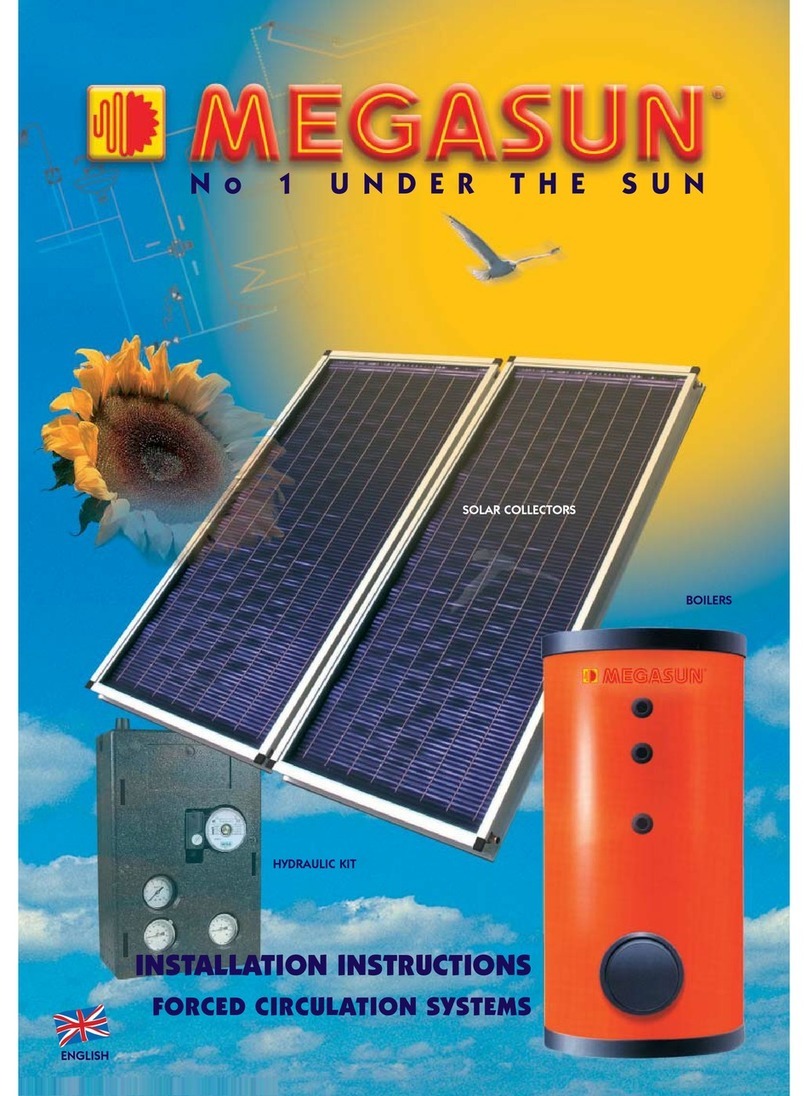
Megasun
Megasun ST-2000 Installation instructions and owner's manuals
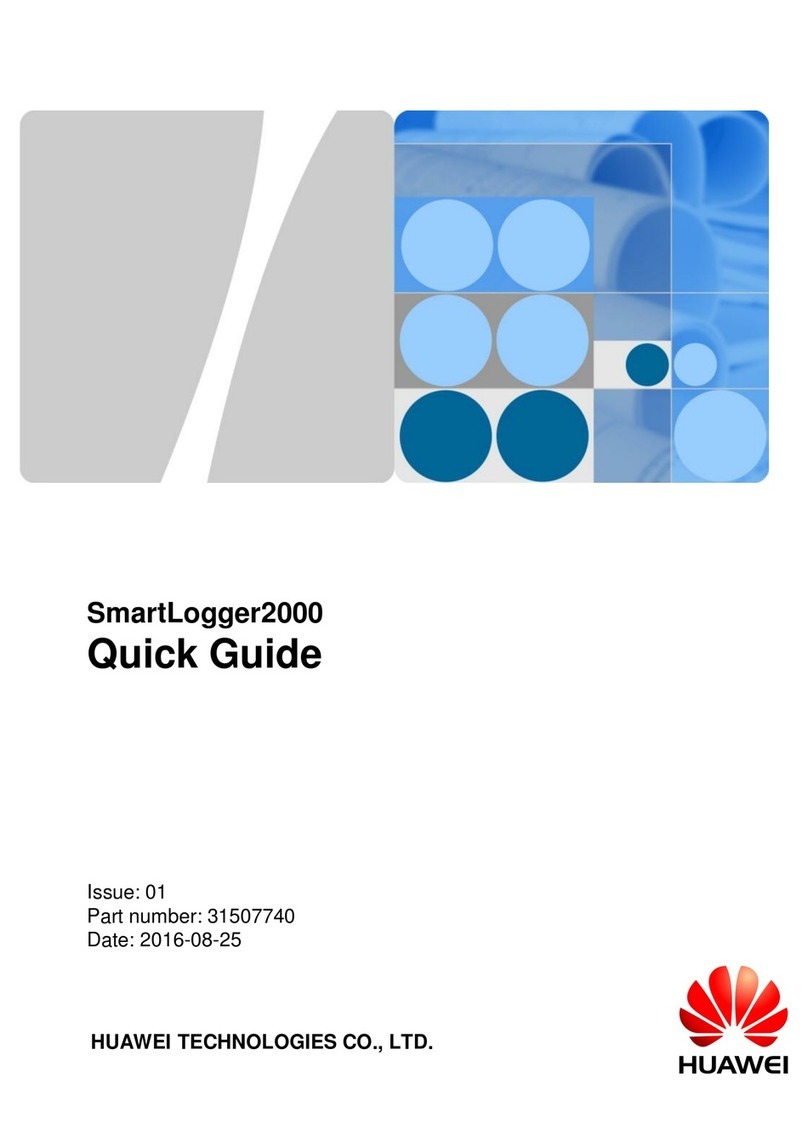
Huawei
Huawei SmartLogger2000 series quick guide

Redarc
Redarc SOLAR SMSP1050 manual
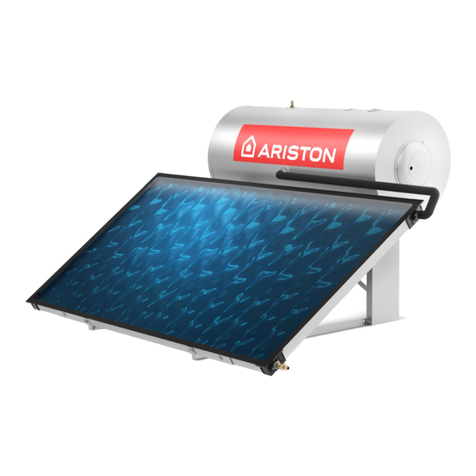
Ariston
Ariston THERMO HF-2 Instruction manual for authorized service personnel
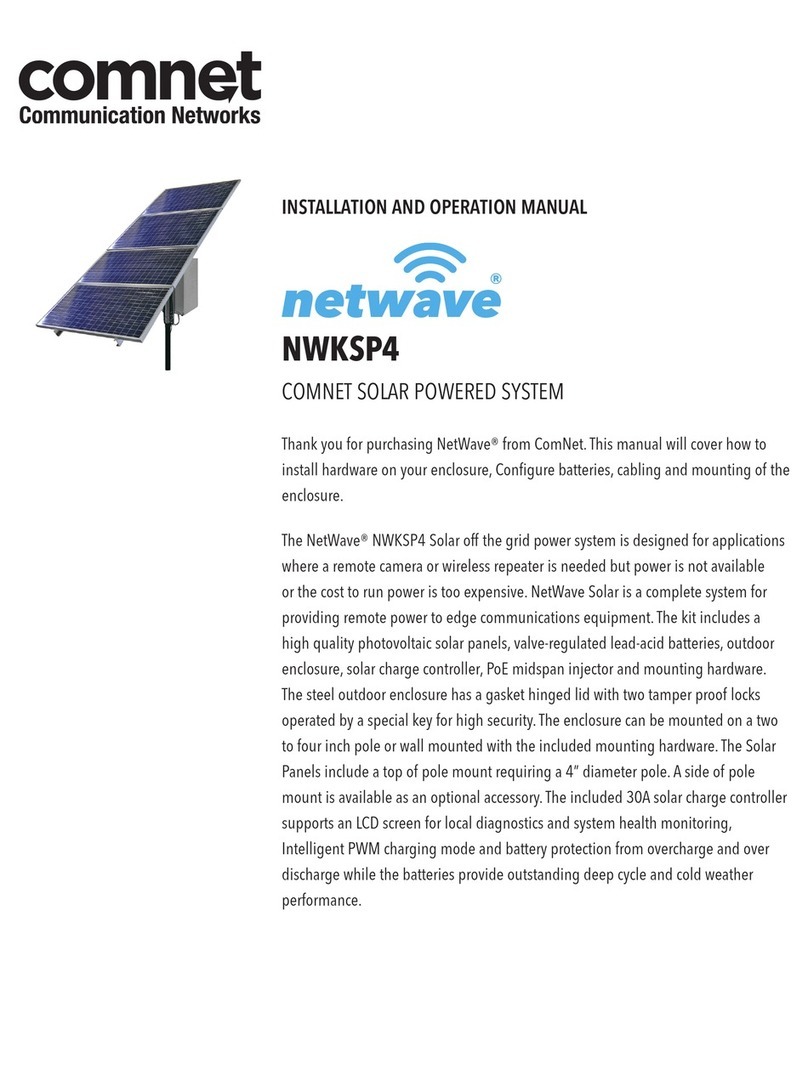
Comnet
Comnet netwave NWKSP4 Installation and operation manual

